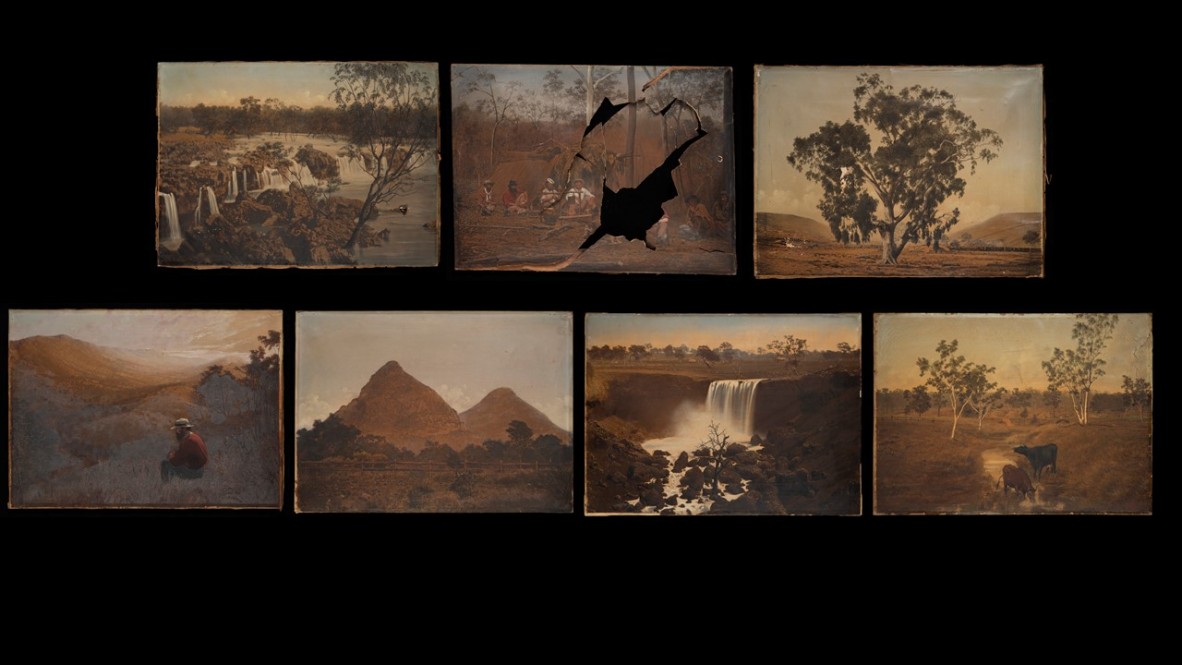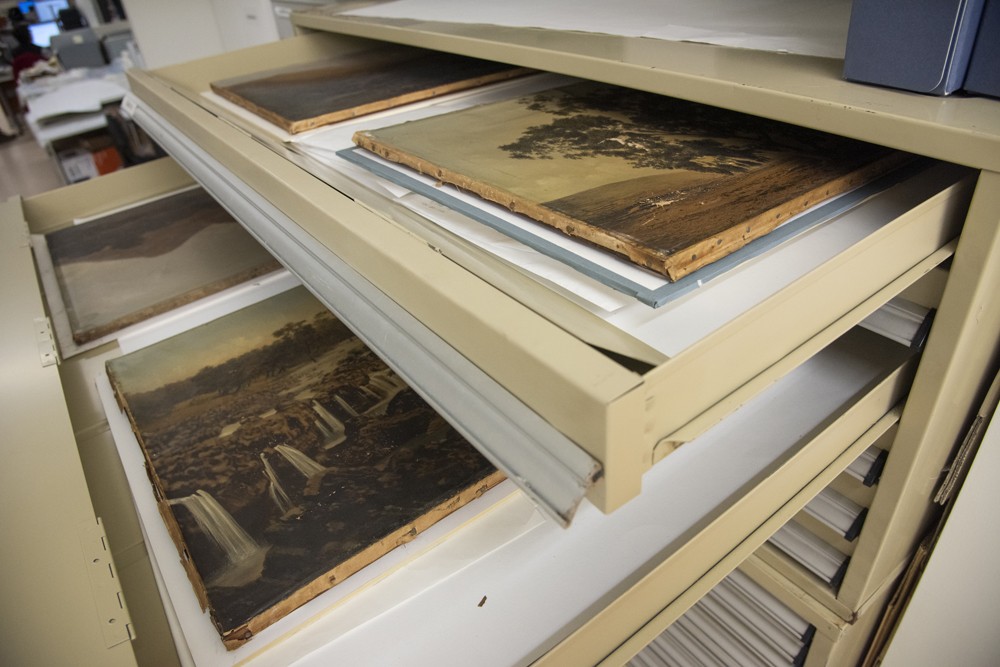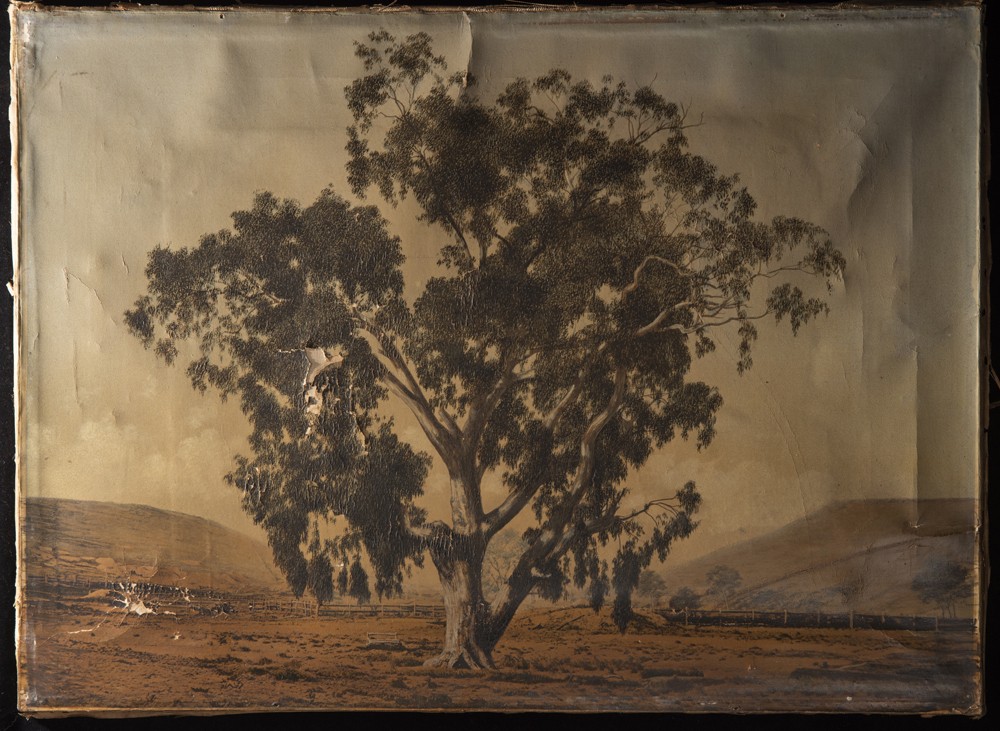Conserving Richard Daintree’s hand-coloured photographs
By JOL Admin | 29 January 2020
As a university student, learning about the conservation of artefacts, I remember one of my professors talking about treatment ethics, citing a phrase often referenced in the medical field, “First, do no harm”1,2. My university professor had another interesting guiding principle, “So what?”, but that’s a topic for another time… Now working as a qualified conservator at the State Library of Queensland, this phrase is at the forefront of my mind as we work to ensure the longevity of State Library’s treasured collections.
This year, in the State Library conservation lab, we are excited and privileged to have been tasked with the job of investigating the conservation of seven hand-coloured photographs by Richard Daintree (1832-1878)3 (see Image 1). Due to the condition of these works, their historic significance, and the complexity of their conservation, they have waited a number of years to be given the kind of conservation treatment they deserve. For well over a decade, they have been lying in flat file drawers (away from their natural enemies of light, dust, and humidity), waiting until the time was right for a full and considered conservation treatment (see Image 2). It has taken this length of time, and more than one senior conservator, to successfully articulate the unique requirements for the conservation of these works of art, and to secure the necessary time and resources to carry out the work.


Last year, Rachel Spano, Senior Conservator at State Library, presented a winning pitch to secure seed funding to research, analyse, and formulate an ethical treatment plan for these seven hand-coloured photographs. The Queensland Library Foundation was instrumental in making this happen, and we thank State Library’s generous donors for helping us make this important work a reality4 .
These works tell a unique Queensland story, and part of that story is revealed through their material composition and condition (see image 3). Over the coming months we will be preparing detailed condition reports for each of the seven works, researching the materials and techniques used to create them, and undertaking technical analysis and testing to come up with a plan for their treatment.

Conservation can be a tricky business. It is time consuming, and the details matter. The State Library of Queensland cares about the unique character of each work and as conservators, we are governed by the highest respect for the integrity of the object; taking into consideration such things as the creation of the work, its physical properties, significance, and aesthetics5. We want
these works to maintain their historic integrity, to survive and be safely available for the general public to view now, and into the future.
Please follow this interesting process in upcoming blog posts as our project progresses, and witness how we ensure that the treatment of our cultural heritage collections is of the highest order, where we, ‘First, do no harm’.
Kelly Leahey - Conservator, State Library of Queensland
References
- Thank you, Dr Marcelle Scott, your words are always with me while I work.
- 3966 Richard Daintree [Works of Art], John Oxley Library, State Library of Queensland.
- Blog: Crowd Giving 2019: $30,000 raised to support State Library of Queensland projects
- Learn more about the Code of Ethics and Code of Practice for the Australian Institute for Conservation of Cultural Material.
Comments
Your email address will not be published.
We welcome relevant, respectful comments.